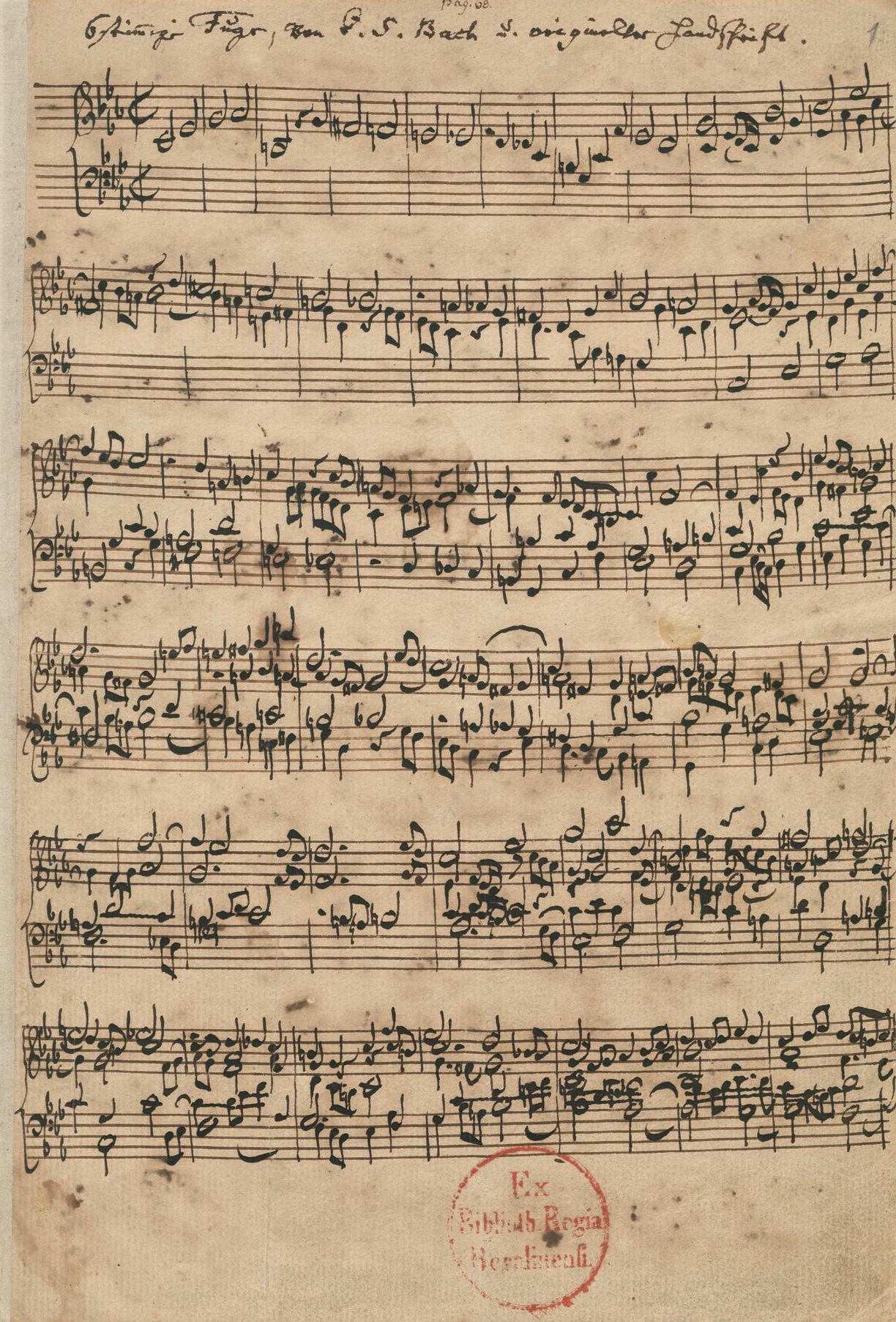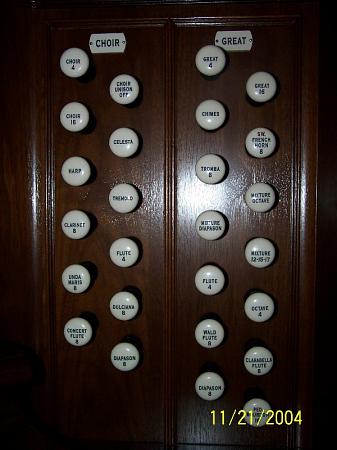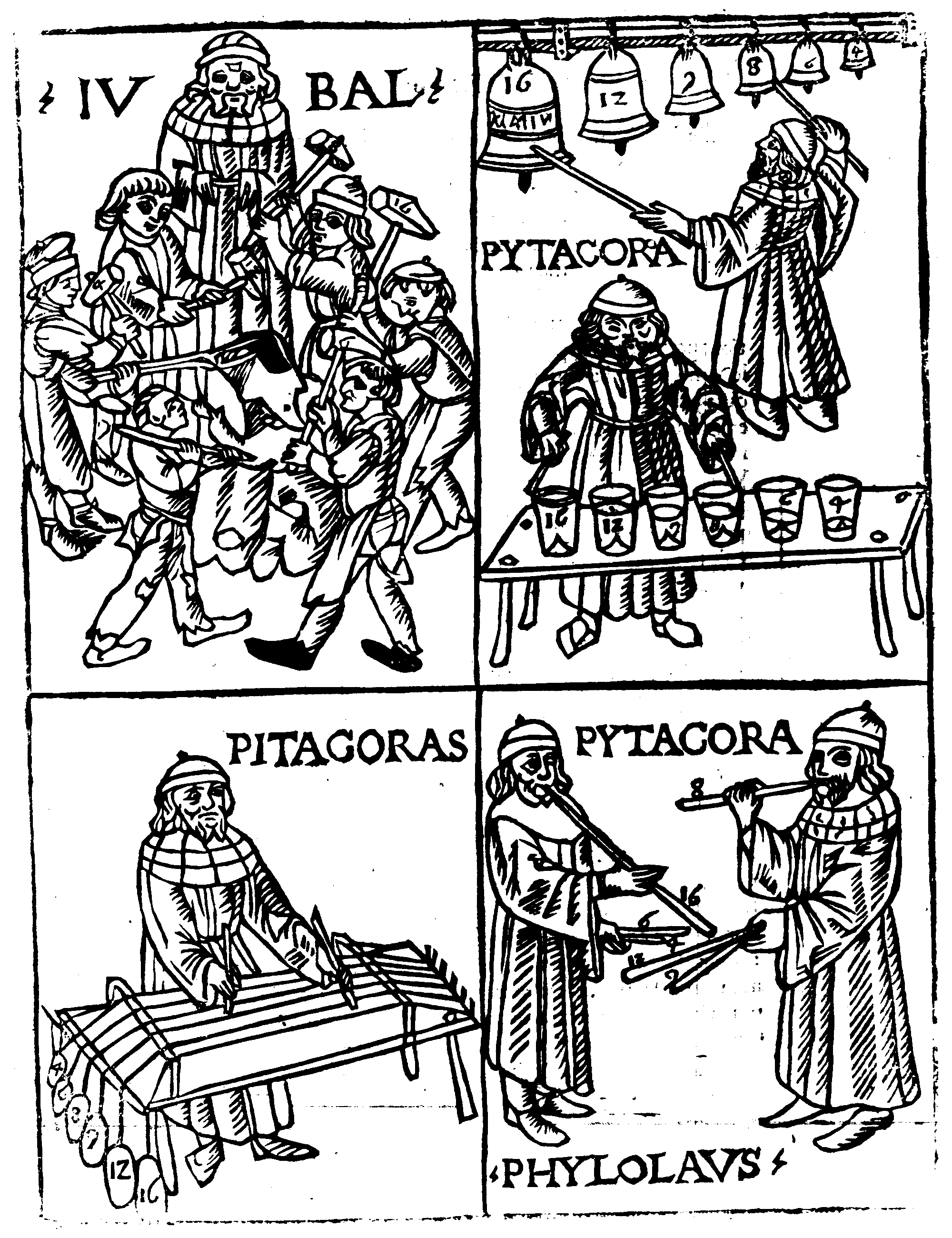|
Stretto
The Italian term ''stretto'' (plural: ''stretti'') has two distinct meanings in music: # In a fugue, ''stretto'' () is the imitation of the subject in close succession, so that the answer enters before the subject is completed.Apel, Willi, ed. (1969). ''Harvard Dictionary of Music'', Second Edition, Revised and Enlarged. The Belknap Press of Harvard University Press, Cambridge, Massachusetts. . # In non-fugal compositions, a ''stretto'' (also sometimes spelled ''stretta'') is a passage, often at the end of an aria or movement, in faster tempo. Examples include the end of Franz Liszt's transcendental etude No.10, the end of the last movement of Beethoven's Fifth Symphony; measure 227 of Chopin's Ballade No. 3; measures 16-18 of his Prelude No. 4 in E minor; and measure 26 of his Etude Op. 10, No. 12, "The Revolutionary." Fugal stretto The term ''stretto'' comes from the Italian past participle of '' stringere'', and means "narrow", "tight", or "close". ... [...More Info...] [...Related Items...] OR: [Wikipedia] [Google] [Baidu] |
Fugue
In classical music, a fugue (, from Latin ''fuga'', meaning "flight" or "escape""Fugue, ''n''." ''The Concise Oxford English Dictionary'', eleventh edition, revised, ed. Catherine Soanes and Angus Stevenson (Oxford and New York: Oxford University Press, 2006). ) is a Counterpoint, contrapuntal, Polyphony, polyphonic Musical composition, compositional technique in two or more voice (music), voices, built on a Subject (music), subject (a musical theme) that is introduced at the beginning in imitation (music), imitation (repetition at different pitches), which recurs frequently throughout the course of the composition. It is not to be confused with a ''fuguing tune'', which is a style of song popularized by and mostly limited to Music history of the United States, early American (i.e. shape note or "Sacred Harp") music and West gallery music, West Gallery music. A fugue usually has three main sections: an exposition (music), exposition, a development (music), development, and a final ... [...More Info...] [...Related Items...] OR: [Wikipedia] [Google] [Baidu] |
Stretto - Bach's Well Tempered Clavier Fugue No
The Italian term ''stretto'' (plural: ''stretti'') has two distinct meanings in music: # In a fugue, ''stretto'' () is the imitation of the subject in close succession, so that the answer enters before the subject is completed.Apel, Willi, ed. (1969). ''Harvard Dictionary of Music'', Second Edition, Revised and Enlarged. The Belknap Press of Harvard University Press, Cambridge, Massachusetts. . # In non-fugal compositions, a ''stretto'' (also sometimes spelled ''stretta'') is a passage, often at the end of an aria or movement, in faster tempo. Examples include the end of Franz Liszt's transcendental etude No.10, the end of the last movement of Beethoven's Fifth Symphony; measure 227 of Chopin's Ballade No. 3; measures 16-18 of his Prelude No. 4 in E minor; and measure 26 of his Etude Op. 10, No. 12, "The Revolutionary." Fugal stretto The term ''stretto'' comes from the Italian past participle of '' stringere'', and means "narrow", "tight", or "close". ... [...More Info...] [...Related Items...] OR: [Wikipedia] [Google] [Baidu] |
Musical Terminology
A variety of musical terms is encountered in Sheet music, printed scores, music reviews, and program notes. Most of the terms Italian musical terms used in English, are Italian, in accordance with the Italian origins of many European musical conventions. Sometimes, the special musical meanings of these phrases differ from the original or current Italian meanings. Most of the other terms are taken from French language, French and German language, German, indicated by ''Fr.'' and ''Ger.'', respectively. Unless specified, the terms are Italian or English. The list can never be complete: some terms are common, and others are used only occasionally, and new ones are coined from time to time. Some composers prefer terms from their own language rather than the standard terms listed here. 0–9 ; 1 : "sifflet" or one foot organ stop ; I : usually for Violin family, orchestral string instruments, used to indicate that the player should play the passage on the highest-pitched, thinnest ... [...More Info...] [...Related Items...] OR: [Wikipedia] [Google] [Baidu] |
Imitation (music)
In music, imitation is the repetition of a melody in a polyphonic texture shortly after its first appearance in a different voice. The melody may vary through transposition, inversion, or otherwise, but retain its original character. The intervals and rhythms of an imitation may be exact or modified; imitation occurs at varying distances relative to the first occurrence, and phrases may begin with voices in imitation before they freely go their own ways. Imitation helps provide unity to a composition and is used in forms such as the fugue and canon. Definitions When a phrase recurs exactly as before (except perhaps transposed), it is called strict imitation. A round is thus an example of strict imitation. Repetition is defined as the repetition of a phrase or melody often with variations in key, rhythm, and voice. Different authors define imitation somewhat differently: The point of imitation, "marks the beginning of a series of imitative entries in a con ... [...More Info...] [...Related Items...] OR: [Wikipedia] [Google] [Baidu] |
The Well-Tempered Clavier
''The Well-Tempered Clavier'', BWV 846–893, consists of two sets of preludes and fugues in all 24 major and minor keys for keyboard by Johann Sebastian Bach. In the composer's time ''clavier'' referred to a variety of keyboard instruments, namely the harpsichord, the clavichord and the organ (which operates using air instead of strings), but not excluding the regal and the then newly-invented fortepiano. The modern German spelling for the collection is ' (WTK; ). Bach gave the title ' to a book of preludes and fugues in all 24 keys, major and minor, dated 1722, composed "for the profit and use of musical youth desirous of learning, and especially for the pastime of those already skilled in this study". Some 20 years later, Bach compiled a second book of the same kind (24 pairs of preludes and fugues), which became known as ''The Well-Tempered Clavier'', Part Two (in German: ''Zweyter Theil'', modern spelling: ''Zweiter Teil''). Modern editions usually refer to both parts ... [...More Info...] [...Related Items...] OR: [Wikipedia] [Google] [Baidu] |
Polyphonic Form
Polyphony ( ) is a type of musical texture consisting of two or more simultaneous lines of independent melody, as opposed to a musical texture with just one voice (monophony) or a texture with one dominant melodic voice accompanied by chords (homophony). Within the context of the Western musical tradition, the term ''polyphony'' is usually used to refer to music of the late Middle Ages and Renaissance. Baroque forms such as fugue, which might be called polyphonic, are usually described instead as contrapuntal. Also, as opposed to the ''species'' terminology of counterpoint, polyphony was generally either "pitch-against-pitch" / "point-against-point" or "sustained-pitch" in one part with melismas of varying lengths in another. In all cases the conception was probably what Margaret Bent (1999) calls "dyadic counterpoint", with each part being written generally against one other part, with all parts modified if needed in the end. This point-against-point conception is opposed to ... [...More Info...] [...Related Items...] OR: [Wikipedia] [Google] [Baidu] |
Music Theory
Music theory is the study of theoretical frameworks for understanding the practices and possibilities of music. ''The Oxford Companion to Music'' describes three interrelated uses of the term "music theory": The first is the "Elements of music, rudiments", that are needed to understand Musical notation, music notation (key signatures, time signatures, and Chord chart, rhythmic notation); the second is learning scholars' views on music from Ancient history, antiquity to the present; the third is a sub-topic of musicology that "seeks to define processes and general principles in music". The musicological approach to theory differs from music analysis "in that it takes as its starting-point not the individual work or performance but the fundamental materials from which it is built." Music theory is frequently concerned with describing how musicians and composers make music, including Musical tuning, tuning systems and composition methods among other topics. Because of the ever-expan ... [...More Info...] [...Related Items...] OR: [Wikipedia] [Google] [Baidu] |
Haydn Quartet Op
Franz Joseph Haydn ( ; ; 31 March 173231 May 1809) was an Austrian composer of the Classical period. He was instrumental in the development of chamber music such as the string quartet and piano trio. His contributions to musical form have led him to be called "Father of the Symphony" and "Father of the String quartet". Haydn arose from humble origins, the child of working people in a rural village. He established his career first by serving as a chorister at St. Stephen's Cathedral, Vienna, then through an arduous period as a freelance musician. Eventually he found career success, spending much of his working life as music director for the wealthy Esterházy family at their palace of Eszterháza in rural Hungary. Though he had his own orchestra there, it isolated him from other composers and trends in music so that he was, as he put it, "forced to become original". During this period his music circulated widely in publication, eventually making him the most celebrated compose ... [...More Info...] [...Related Items...] OR: [Wikipedia] [Google] [Baidu] |
String Quartets, Op
String or strings may refer to: *String (structure), a long flexible structure made from threads twisted together, which is used to tie, bind, or hang other objects Arts, entertainment, and media Films * Strings (1991 film), ''Strings'' (1991 film), a Canadian animated short * Strings (2004 film), ''Strings'' (2004 film), a film directed by Anders Rønnow Klarlund * Strings (2011 film), ''Strings'' (2011 film), an American dramatic thriller film * Strings (2012 film), ''Strings'' (2012 film), a British film by Rob Savage * ''Bravetown'' (2015 film), an American drama film originally titled ''Strings'' * ''The String'' (2009), a French film Music Instruments * String (music), the flexible element that produces vibrations and sound in string instruments * String instrument, a musical instrument that produces sound through vibrating strings ** List of string instruments * String piano, a pianistic extended technique in which sound is produced by direct manipulation of the strings, r ... [...More Info...] [...Related Items...] OR: [Wikipedia] [Google] [Baidu] |
Haydn
Franz Joseph Haydn ( ; ; 31 March 173231 May 1809) was an Austrian composer of the Classical period (music), Classical period. He was instrumental in the development of chamber music such as the string quartet and piano trio. His contributions to musical form have led him to be called "Father of the Symphony" and "Father of the String quartet". Haydn arose from humble origins, the child of working people in a rural village. He established his career first by serving as a chorister at St. Stephen's Cathedral, Vienna, then through an arduous period as a freelance musician. Eventually he found career success, spending much of his working life as Kapellmeister, music director for the wealthy Esterházy family at their palace of Eszterháza in rural Hungary. Though he had his own orchestra there, it isolated him from other composers and trends in music so that he was, as he put it, "forced to become original". During this period his music circulated widely in publication, eventuall ... [...More Info...] [...Related Items...] OR: [Wikipedia] [Google] [Baidu] |
Countersubject
In music, a subject is the material, usually a recognizable melody, upon which part or all of a composition is based. In forms other than the fugue, this may be known as the theme. Characteristics A subject may be perceivable as a complete musical expression in itself, separate from the work in which it is found. In contrast to an idea or motif, a subject is usually a complete phrase or period. The ''Encyclopédie Fasquelle'' defines a theme (subject) as " y element, motif, or small musical piece that has given rise to some variation becomes thereby a theme". Thematic changes and processes are often structurally important, and theorists such as Rudolph Reti have created analysis from a purely thematic perspective. Fred Lerdahl describes thematic relations as "associational" and thus outside his cognitive-based generative theory's scope of analysis. In different types of music Music based on a single theme is called monothematic, while music based on several themes is ... [...More Info...] [...Related Items...] OR: [Wikipedia] [Google] [Baidu] |
Bach Fugue In C WTC3 Opening Bars
Johann Sebastian Bach (German: Help:IPA/Standard German, [ˈjoːhan zeˈbasti̯an baχ]) ( – 28 July 1750) was a German composer and musician of the late Baroque music, Baroque period. He is known for his prolific output across a variety of instruments and forms, including the orchestral ''Brandenburg Concertos''; solo instrumental works such as the Cello Suites (Bach), cello suites and Sonatas and Partitas for Solo Violin (Bach), sonatas and partitas for solo violin; keyboard works such as the ''Goldberg Variations'' and ''The Well-Tempered Clavier''; organ works such as the ' and the Toccata and Fugue in D minor, BWV 565, Toccata and Fugue in D minor; and choral works such as the ''St Matthew Passion'' and the Mass in B minor. Since the 19th-century Reception of Johann Sebastian Bach's music, Bach Revival, he has been widely regarded as one of the greatest composers in the history of Western music. The Bach family had already produced several composers when Joh ... [...More Info...] [...Related Items...] OR: [Wikipedia] [Google] [Baidu] |







